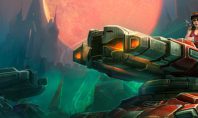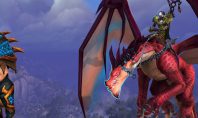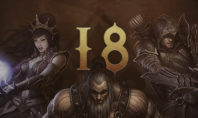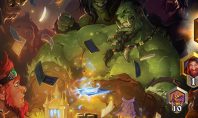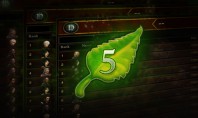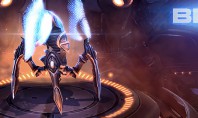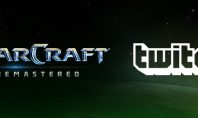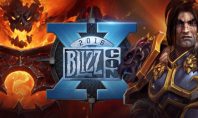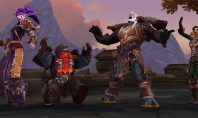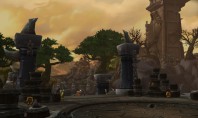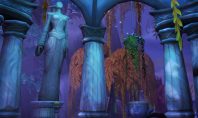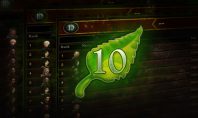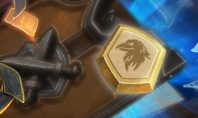SC2: Ein Interview mit dem Astronauten Daniel T. Barry

Während der im Jahr 1999 durchgeführten ersten Mission zum Andocken an die Internationalen Space Station brachte der damals als Astronaut tätige Daniel T. Barry unter anderem eine CD des ursprünglichen Starcrafts mit sich, die gemeinsam mit diesem Team neun Tage lang die Erde umrundete und danach dann sicher zur Erde zurückkehrte. Nach diesem beeindruckenden Trip wurde diese CD dann von allen an der Mission beteiligten Astronauten unterschieben und an das Hauptquartier von Blizzard Entertainment zurückgeschickt. Seit diesem Zeitpunkt gehört diese besondere Version von Starcraft 1 zu den Ausstellungsstücken in dem hauseignen Museum dieses Entwicklerstudios und kann aktuell von allen Besuchern vor Ort angeschaut werden.
Auch wenn dieser Trip mittlerweile nun ungefähr 18 Jahre zurückliegt, so konnten sich die Mitarbeiter von Blizzard Entertainment vor Kurzem aber trotzdem ein wenig mit Daniel T. Barry zusammenzusetzen und mehr als 40 Minuten lang über diesen besonderen Trip in das Weltall reden. Während dieses gestern Abend netterweise auf YouTube und der offiziellen Communityseite von Starcraft 2 veröffentlichten Interviews sprach dieser ehemalige Astronaut unter anderem darüber, warum er ausgerechnet Starcraft 1 mit ins All brachte, welche Bedeutung dieses Spiel für ihn und seine Familie hat, wie die Arbeit als Astronaut abläuft, warum er diesem Traum hinterherjagte und was er von Computerspielen im Allgemeinen hält.
Da die im Verlauf dieses Interviews gegebenen Antworten sowohl äußerst informativ als auch leicht herzergreifend sind, kann ich an dieser Stelle jedem Fan des Universums von Starcraft oder Blizzard Entertainment wirklich nur empfehlen, sich das folgende Video anzuschauen oder die darunter eingebaute Abschrift durchzulesen.
We recently sat down for a conversation with Daniel Barry, the former astronaut who in 1999 flew a StarCraft game disc into space aboard the Space Shuttle Discovery. The game’s historic voyage took place during STS-96, the first ever mission to dock with the International Space Station. In this interview, we discussed his family’s relationship with StarCraft, the importance of following your dreams, and the path that took him—and the game—into space.
Die Abschrift des Interviews:
What made you first want to become an astronaut?
Daniel Barry, M.D., Ph.D., Former NASA Astronaut: I wanted to be an astronaut as long as I can remember. As far back as forever. I was that kinda kid who was constantly jumping off stuff, trying to fly. I got a football helmet for my 5th birthday because my parents got tired of the head injuries. I didn’t play football, I just jumped off everything. I hung out at the airport, clinging on to the chain link fence and watching the planes go. So, it’s what I really wanted to do forever.
That was great in first grade. In fact, everybody else who was my friend wanted to be an astronaut and the adults were really good about it too, like, „sure kid, go for it.“ But around sixth grade, maybe there was five or six of us left…everyone else wanted to be sports stars or movie stars. By [the time I was] a senior in high school, I was the only one left.
I remember the day I went in to see the guidance counselor, who I thought was gonna tell me exactly how to become an astronaut, and so I was pretty pumped up for that. I go in and she looks at this piece of paper and she says, „you wanna be an astronaut?“ and I was like, „yep, that’s what I’m gonna do,“ [laughs]. She said „lemme give you a little dose of reality here. You’re not smart enough to be an astronaut.“ I was like, „what?“ and she said, „and you’re not athletic enough to be an astronaut.“ I was like, „well I can go to the gym, you know.“ Then the last blow was, „and frankly you’re not good looking enough to be an astronaut.“ [laughs] It was a sad day.
It seems harsh that your guidance counselor told you that you couldn’t be an astronaut. What kept you going?
Barry: Not that she was trying to be mean, she was trying to save this clueless kid from disappointment. She thought she was doing a nice thing. After I heard that, I went off to college and all, and I was in college and I had to make a choice. I had an opportunity to go into the Air Force on a scholarship and become a pilot.
I didn’t give up. I stopped telling people I wanted to do it, ‚cause I realized after that that most people thought it was a joke. But I started applying as soon as I met the minimum requirements, in my early twenties. It took me 14 years of applications, but I finally got in.
I wrote a letter to an astronaut saying that I had an opportunity with the Air Force, or I could stick with engineering, which is what I really liked. My goal was to be an astronaut. Ed Gibson was the guy I wrote to, and he wrote back this beautiful three-page typewritten letter, basically saying, „If what you want to do is fly airplanes, go fly airplanes. If what you really want to do is engineering, do that. About five years from now, the Space Shuttle is gonna come online, and frankly, there’s gonna be two pilots for every five scientists flying, and so there’s gonna be opportunities on both sides.” He said, „What you’ve gotta do is follow what you really love to do, and that motivation will get you to be the best in the world, and that’s what you need to be.“
I really took that to heart, and I gave up the whole Air Force thing, and that’s when I started getting serious. At that point I decided that every day I would do something to get closer to becoming an astronaut. I literally went for about twenty years where I would not go to sleep at night unless I’d done something that day to get closer to flying in space. It might be something simple like read an article, write some software, propose an experiment, God knows what. But that’s how I kept the dream alive, because I wouldn’t spend even one day that I didn’t do something to get closer to the dream.
Were you a fan of science fiction? Did that influence your enthusiasm for space and space travel?
Well, I mean, y’know, your motivations change, but as a kid it was all about flying and fire and smoke and going fast. My whole family were big science fiction fans, so we read a lot of space sci-fi, that sort of thing. As you get older, you sort of see a different perspective. I mean…don’t get me wrong, a lot of it is about going fast and fire and smoke and floating in zero G, but there’s also the parts that I didn’t even anticipate. The camaraderie of being on a team that works together and you know that people will risk their life to save yours. That’s a pretty powerful place to be.
One aspect of the job I didn’t quite get when I was young, but as I got older…it’s a really interesting job, because you have a very intellectual side of it where you’re studying circuitry and figuring out patterns of systems and that sort of thing. It’s also a very physical job where you train for hours and hours underwater to do spacewalks and you fly jet aircraft at high speed in a precision kind of way. So I really enjoyed this combination of academics for half the day, and then going to fly a jet or be underwater or go in the zero G aircraft for another half a day. It’s a really wonderful combination of activities.
What games did you play growing up?
Games that appeal to me are games that are easy to learn and hard to master. My favorite game is Go. I played Go since I was in college. I’m still terrible at it, in the global sense, but I’ve gotten to a point where I can play reasonably. I can teach somebody to play Go in less than five minutes. They have all the rules, and we can play a game. One nice thing about Go is that it’s handicappable, so we can actually play a competitive game—someone who’s played Go for 40 years with someone who learned it 10 minutes ago. I think that’s a characteristic of a really good game.
One of the things that appeals to me about some of the later things that have come out in StarCraft is the effort that was put in to let people play the game who are not necessarily gamers, and yet maintain the extreme difficulty of becoming a master of the game. I think that Blizzard, as a company, has done a really good job of that. I see parallels between deciding that [a game] is something you want to invest time in, and pursuing that all the way to the goal of mastering the game and winning championships. I definitely think that that kind of perseverance translates into the real world as someone who gets stuff done.
What made you want to take StarCraft, of all games, into space with you?
I decided to take StarCraft with me when I went into space because…well, a number of reasons. One is that I really enjoyed the game, but, you know, I enjoyed a lot of games. The primary reason was because I saw StarCraft as something that helped me to stay in touch with my family while I was traveling.
I was away from home a lot as part of the astronaut job, but also partly because our family situation was that my wife was a professor in Massachusetts, so I was commuting a lot between Houston and Massachusetts. When you have kids, you want to stay connected every day. I would read them books. I used to read about an hour, sometimes an hour and a half at night, and so we went through—do you know there are 16 different Wizard of Oz books? I didn’t know that, but we went through them all.
Another thing we did was we’d play games together, and StarCraft, in particular, stood out as a game that my son and I played for years as a way to just have fun together and I really feel like [StarCraft] brought us closer together as a family. Then, of course, the space theme and all that stuff…it just fit. StarCraft and Go were the only two games that I brought to space.
Did Blizzard know you were taking StarCraft to space and did you get to play it?
I decided to take it into space without saying anything to Blizzard. It was just something I wanted to do. It was more a family decision; we were picking what CDs to fly. And then, I don’t even know who, one of us said: “Well, let’s fly StarCraft.” I was like, “That’s a great idea!”
The things that you bring for people into space are stowed away. You can’t even take them out and get a photo. You can take two things in what’s called a crew locker that you take out, but you take about twenty that are packed away and you don’t have access to, so no.
On the [Space] Shuttle and the [International Space] Station we had laptops, so we probably could have played, although it would have been a big deal…we would’ve had to get NASA’s approval to put a game on a flight computer. It would’ve been way too much trouble. You don’t have time anyway. When you’re in space, it’s so incredible, and it’s just such an amazing place to be. You don’t spend a lot of time at the computer.
So I just did it. And then, after I brought it home, I was like, “Well, what do you do? You have a lot of stuff.” [laughs] I thought, “well, maybe Blizzard would like to have it back.” I wrote an email to Blizzard saying, “By the way, I flew [StarCraft] into space, would you have an interest in it?”
Did you play StarCraft cooperatively, or against one another?
We did both. My daughter was more into Warcraft than StarCraft, but we all played. We also played tennis. So sometimes you’d play tennis against each other and sometimes you’d play as doubles together, and we did the same thing in StarCraft. We also played the solo [missions] together. You know, on a weekend day or something we’d sit down and play the solo stuff and run through a couple chapters. We did it all, we play solo together, we played 1v1, we played teams. All of it.
What race did you like to play?
I always found protoss to be easier to play, so when I didn’t play for a long time, I played protoss. My son would beat me up with Siege Tanks as terran and so I went back and forth. Obviously, StarCraft is a game between do you gather more resources or do you go on the attack, and you have to balance those two.
One of the things I really enjoyed about it was the sneakiness, right? You could cloak people and get ‘em in and fire off a nuke or something like that, and the idea of sending decoy troops out to get someone to deploy to an area and then running in in the end, I just thought that those different kinds of war strategies were fascinating to play around with. We did a lot of exploration, if you will, as opposed to just straight out ok, 1v1, let’s just fight and play.
Again, one of the nice things about StarCraft is that you can have a very simplistic approach where you just bash each other’s heads, or as you learn to play a little better you can have more sophisticated strategies within the game. I like that issue of going from simple to complex.
[My son] was born in 1985, so when we started playing StarCraft, he was pretty young. As he grew up, you could watch his intellectual development along with his StarCraft expertise. I would compare a game that we’d saved from a year earlier and I’d be like, “wow, look at how your sophistication has changed!” It was a way of actually watching my kids grow up. You know how you save photographs from when they were 5 and 10 and 18? Well, we saved StarCraft games! We’d go back and play the replays. And just like you’re embarrassed at your 16th birthday about your 6-year-old picture that your mother brings out, he’d be like “no, no, you have to get rid of that replay, I was so bad!”
By the way, both of [my children] grew up to do computer science, and I think video gaming was part of that. They both have Ph.Ds in Computer Science from MIT, and they both work at a robotics company in Boston.
What other games did you play?
We played Warcraft before StarCraft. How did we find Warcraft? Gosh, I can’t remember. But we played Warcraft I, so we were on it pretty early.
[My son] started playing video games like Chuck Yeager’s Air Combat when he was 4 years old. I’d come home and he’d be like “Dad! It’s a great day for flyin’!” which is what Chuck Yeager would say in the game.
I guess the key, from my point of view, was to play together. I don’t think [the kids] played many video games that I didn’t play. Mostly because whenever they wanted to play video games, I was like “great, let’s play!” and you know, we’d go after the ones that we already had. If you like video games, it’s a really great way to do family bonding, so we did a lot of that sort of thing.
I taught them how to program really early. I taught both of them BASIC when they were about 4 or 5, and then Visual Basic came out, which was great. Even at age 6 or 7, you could write code to make visual interfaces in Windows. We did a lot of computer science and robotics and that sort of stuff, but it wasn’t something I did because I wanted to make my kids smarter or anything like that, we just did it because I liked doing it. It was fun.
How did StarCraft’s representation of space compare with your experience in space?
Oh, I really liked it! I mean, you know, it’s not realistic, in a sense, but it’s every bit as good as the cinematic views, for the most part. And really, StarCraft wasn’t about the space depictions anyway, it was about the personal relationships. You know, Jim Raynor and Sarah Kerrigan and how they’re interacting with each other is, if you wanna call it the culture, of StarCraft to me. I think the graphics were pretty cool, and the movies and all that, but I wouldn’t say that it was realistic. But what science fiction necessarily is?
Did anything about space travel surprise you? Did you experience it differently than you expected to before leaving earth?
Yeah, so, some of the surprises that happen when you fly…there’s a lot of them. I would say the biggest surprise I had on the first flight was the beauty of the earth. I was the photo/TV guy for STS-72, so I’d spent a year with photographers looking at video and at images of the earth and I thought I had a pretty good idea of what the earth looked like. When I floated up to that window for the first time [pauses] you know how you have memories that are embedded forever? Well, that’s one of them.
The beauty of the earth so completely surpasses any imagery that we bring back. The depth of color. The green of the Amazon jungle and the tan of the Namibian desert and the white of the Himalaya snow, and the layers of blue in the atmosphere…I didn’t even know, but there are at least 16 to 20 separate layers of blue when you look at the atmosphere. They actually are distinct layers. They go all the way from the lightest sort of turquoise blue to the deepest darkest midnight royal blue that you can possibly imagine, and film and digital imagery just doesn’t have the color range that your eyes have and it also doesn’t have the dynamic range, so you look at the white of the clouds against the complete black of space, and you can see that with your eye, whereas camera just saturate—either saturate the black or the white. I can’t bring back photography that shows you how beautiful the earth is. It’s just incredible.
Another surprise was that I didn’t have any clue where we were. We looked out the window, and I’d studied all these pictures of the earth for so long—no idea, I’d have to look at the computer to figure out where we were, and yet Brian Duffy, who was on his third flight, would look out the window and he’d go, “Oh look, there’s the whatever province in China” or “There’s the Namibian desert” and I was like “You gotta be kidding me. You must be cheating, right?” Like, I thought he was just goofing me—that he’d looked at the computer first. He says “No, no, just look out the window for a few days and you’ll know.” And sure enough, the first thing I recognized was the Great Barrier Reef. I was like “Wow! I know what that is! I know where we are.” But after about three days, almost anywhere in the earth other than big blue ocean, I knew where we were. So I don’t even know how that learning process happens, but somehow your brain figures it out.
The next thing that was pretty interesting, a little bit of a surprise, was learning to fly. We had about a 30 foot long tunnel that, as far as I was concerned, was the gun barrel and I was the bullet. So we fly down this thing, but when you do that on your first day, you’re terrible—you bang into the walls and you smack your head on the bulkheads and you end up all bruised and cut up at the end of the day. But as the days go by you can feel yourself getting better and better. Be there a week, and you’re flying like superman. It’s beautiful. It’s incredible! This sensation is like magic powers. We played Quidditch with no brooms. We emptied out a cargo module and played Quidditch. You know, threw a snitch in there and you try to grab it and you shove somebody else away and everybody goes flying. The sense of freedom and the magical feeling that you can fly is astounding.
What did you do to train to go into space? How did this training prepare you for the actual experience?
I think training and simulations do a good job of preparing you for space, but I don’t think that they feel a lot like weightlessness—except of course for the zero G aircraft, which is exactly like weightlessness, but only for 30 seconds at a time. When you go underwater and become neutrally buoyant, the tasks you do feel very similar to when you’re in space doing those tasks, but when you’re in the suit, you’re very aware of gravity. The suit has some buoyancy to it, even though you’re neutrally buoyant overall and you’re floating in the middle of the water, and the suit has a tendency to turn you in a direction that is mandated by where the air is in the suit. So, for example, if you turn upside down and you’re working in the water upside down, it’s very uncomfortable. The blood flows to your head and you have a lot of weight on your shoulders and you get bruises and that sort of thing, so you tend not to do that, and yet when you actually go do that task in space, of course, being upside down is [undetectable].
When you push off a wall underwater, you go a little ways and you stop, but if you do that in space, you go and you go until you push off another wall. So the preparation is very good in terms of learning the tasks, but it’s not good—in fact, there’s negative training involved, particularly with the viscosity of the water—at teaching you what weightlessness is gonna feel like.
I think the best example I have of that is getting your body oriented to do a task. In the water, you’d grab onto these handrails that were along the shuttle, and you’d basically use your wrists to position your body, and it was hard work, and you do that for 6 or 8 hours and your forearms are destroyed. So you spend a couple of years building up Popeye forearms, but that’s not really the answer, you don’t want to be forcing stuff.
About two weeks before my first flight, which had a spacewalk in it, a mentor, Story Musgrave, saw me at the copy machine and he asked me “Do you have any questions?” and I said “Yeah, Story, how the heck do you orient yourself to do a task?” and he said “Ohhh, you don’t know about the digital tap!”
So, turns out, what you actually do is you hold onto the handrail very lightly, and you reach about six inches above, and you tap on structure. That causes your whole body to start to rotate at a fixed rate. Then you tap when you want to be done—you reach six inches below and you tap again, and you stop. So you don’t put arbitrary inputs in, you put quantal inputs in, and you practice before you go outside. One tap of a particular amount of force, and if you want to go twice as fast, you just tap twice. And it works beautifully. That’s something that just doesn’t work at all underwater.
In fact, when I got on orbit, Story happened to be the com so I called out, “Story…Houston 82, Houston 82, this digital tap thing works really well.” There was a pause and Story comes back and goes, “…we know, Dan.”
Are there any similarities between doing training simulations at NASA and playing video games?
The simulations we do for launch and entry are really super video games because you have four people in the cockpit simulator, in a motion-based simulator, and you have a big group of diabolical instructors who are trying to make you kill yourself and teach you in the process how to become a team. So think about having four of you in a perfect replica of the Space Shuttle cockpit, with beautiful visuals, all mounted on hydraulic jacks so that when you fire a jet, you feel the force from that jet, and you are now gonna work together as a team and you have a group of professional instructors who know these systems like the back of their hands, and you just go day after day after day. That’s how you’re learning to deal with a computer failure at the same time as you’re having an electrical bus failure at the same time as you have hydraulic system failure at the same time you have now another computer failure. Now, two computers are saying one thing and the other two computers are saying another thing. Which two do you believe, how do you switch over, how do you communicate so you’re not crushing the comm? Just say things really succinctly and really important and only when they need to be said…it’s brilliant, it’s brilliant, and the experience of having played video games is exactly what you want to prepare yourself to be in that environment.
You know, people asked me if I was scared to fly, and the answer is no. I mean, I was scared to watch my friends fly, but when you’re actually there, you’re so excited, you’re so ready…I was not scared to fly. And then people said, “Were you scared that you were gonna screw up?” and the answer to that is, on my first flight, I didn’t have a lot to do with launch, so I was just a passenger. But when you get on the flight deck, and the day comes that you know you’re gonna be the flight engineer, the training team brings you to the point where I looked at that seat and I said, “I am the best person in the world to do this job right now. There’s nobody that’s better at this than me. 6 weeks ago there was somebody that was better, and 6 weeks from now there will be somebody who is better, but at this moment, there’s nobody in the world that knows this job better.” If I screw it up, anybody would’ve screwed it up. They bring you to a level of confidence that I hope you have at some point in your life—this sense that—“gimme the ball, coach, ‘cause I can make this basket.” I mean, you feel like you are the best in the world at something. That’s a great feeling.
Have you had a chance to play StarCraft II?
So I have played—we definitely went through the entire StarCraft II [campaign], but we did not play as much, because by the time StarCraft II came out, the kids were in college and they weren’t really living at home anymore, so there’s just not the time to have that kind of together stuff. My daughter’s married now, and they have other people they want to spend time with as well, so we play games that include other people. So we didn’t play as much StarCraft II as we did StarCraft. But we did play through the whole thing. In fact, we did it over one Christmas, just sat down and played through each, as they came out, as the series came out. We played through the whole solo thing, but we didn’t play as much 1v1 as sort of team stuff. We did play some team stuff, but not as much 1v1.
How did playing StarCraft II compare with the original StarCraft?
StarCraft II was highly anticipated in our household [laughs]. So, y’know, we waited a long time for it. I don’t know…sort of the essence of the way we played, in terms of StarCraft vs. StarCraft II, wasn’t much different other than the cooperative [aspects]. And in the intervening time, there were other games that came out that we’d already been playing cooperatively.
I think it was just a bigger universe, more varied things, and I think that the storyline was much more developed in StarCraft II than in StarCraft. The whole Raynor/Kerrigan relationship was built up, and so some of the lore got really interesting, and of course the level of gameplay was much more sophisticated. But the essence of why we play, and how we play, even, didn’t change between StarCraft and StarCraft II.
I would say the gameplay between the two—for me, at least, as a not very good player—wasn’t all that different. I think my attraction to the protoss was also that they were just kinda cool. The way stuff just sort of beamed in, I just liked that. And it also really depended on the mood of the day. I mean, if you’re feeling kind of spacey and fanciful, that’s protoss. But if you’re just feeling like you want to be Patton and just grind through stuff, that’s terran. And if you want to be Apocalypse Now, then you’re zerg.
One of the things I liked about them both—about StarCraft—was that you could choose my mood of the day and go with that. I think the way that StarCraft II came out where you were first terran, then zerg, and then protoss, was kind of neat in the sense that, when the terran one came out, you really polished up your terran skills through the solo campaign. And then that was kind of a nice way—in terms of starting easy and then getting hard to master—having just terran to deal with in the first set was kind of instructional. So by the time you got to the third, when the protoss one comes out, you really feel like you know how to play the terran and zerg sides. I thought that was a good learning process.
Can you see any similarities between real-life robotics and the machines we see in the StarCraft universe?
I founded a robotics company and we’re doing very well there, and certainly some of the things that came up when you’re playing StarCraft come up when you build robots. For example, there’s a distinction, say, between remote-controlling a robot versus having it do autonomous actions, which is completely analogous to driving your Zealot around versus telling him to go attack and then coming back and checking up on him now and then. Now that I think about it, that’s actually a pretty good parallel to exactly what we do with the robots. We have levels of autonomy, and then as the tasks become more difficult for the robot, we have to intervene more and more often. It’s basically micromanagement vs. overall strategy.
You know, now that you made me think about it, it might be interesting to take a look at some of the AI gaming engines as a way to automate some robotic tasks. That’s an interesting idea—I might look into that!
Do you have a particularly fond memory of playing StarCraft?
I was in Japan, I was in Tokyo. And, of course you know there’s a time-lag there, [my son] is in Boston. So either he would have to get up early in the morning or I would. We would find times to play nevertheless. It was early morning in Boston and late or mid-evening in Tokyo, and we’re playing this cooperative game. And we’re doing great, we’re doing really well.
I’ll never forget, he’s like, “Dad, I gotta go to school.” ‘Cause it was 7 o’clock in the morning, right? I’m like, “FORGET SCHOOL, WE GOTTA BEAT THIS THING!” And he’s like, “Ok!”
So we’re playing along, and then I start getting messages from my wife, who’s like, “What are you doing?” I’m like, “Oh c’mon, we’re right in the middle of this game.” She says, “He’s got to go to school!” And so I wrote to her, “Look, look over his shoulder and watch how much thinking he’s doing as we attack this last encampment. If you think he’s gonna learn more by going to school now, then I’ll shut it down and let’s send him to school. But if you think he’s going to learn more by figuring out how to beat up on these zerg, then let us finish it and he’ll just go to school late today.”
So she does, and she writes back, “You’re right.” [laughs]. So we played for a couple more hours and he was late for school, but sometimes you’ve got to find ways to get kids to love to learn. It’s not about teaching them to multiply two numbers; it’s teaching them to want to multiply two numbers so they can go solve some puzzle that they need to get solved. And man, StarCraft does that in spades. Right? It’s an intellectual game. And this idea of deep thinking and strategizing—I think a lot of people think of video games as just…rapid hand movements. That’s where they’re wrong. I really felt like, that day, [my son] was gonna learn ten thousand times more by figuring out this puzzle, this problem, than he would by going and learning multiplication tables or something.
That’s not to disparage early math; that’s just to say that the motivation for doing academic things, for me and I think for me, my kids, and my wife, is puzzle solving. Y’know, you want to solve this puzzle. And you can’t solve it because you don’t have the tools you need to solve it. So you go to school and you learn the tools and then you come back and solve your puzzle; that’s the point. That’s a philosophy I’ve had for a long time—do what you need to do right now to get better at what you want to get better at. It’s a good motivator for academic achievement.
How did you feel about the entire StarCraft story coming to a close at the end of StarCraft II?
Yeah so the close of the story is a little sad. Just like when you read a series of novels and they finally end…you’re like, “aw, man,” but at the same time, it’s good to see all the threads finished. There’s a satisfaction in having an outcome. And I think it ended on a very high note, which is exactly what you want. You don’t want to get to the point where you’re like, “Well I don’t really care, we’re on our 32nd episode and it just doesn’t matter anymore.”
I liked the way it ended. While I was sad to not have more storyline and more solo [missions] to pursue, there’s always something new on the horizon. I like the idea of ending on a high note and I think that’s exactly what StarCraft II did.
What do you think the future holds for space exploration? Will we eventually make it to Mars?
In terms of going to Mars, colonizing Mars, that sort of thing…when I was growing up, I thought that would be my job as an astronaut. I thought, “well we’ve done the moon…” I thought I’d have my boots on Mars. It seems like that’s a goal that’s always 20 years in the future. But it’s really a political question more than a technical question. I think we could go to Mars today. We have the technology, we have the rockets to do it, or at least the knowledge to build the rockets to do it. Certainly the technology to survive in the caves and that sort of stuff. It’s more a political will question, I think, in terms of the ability to do it.
Another question is: Why? There’s a lot of people who say, “We can just send robots! If it’s about science, just send the robots!” And others say, “Well, the robots are not capable,” and there’s this back and forth. I think it’s a specious argument, because if what you want is a rock from Mars, yeah, send a robot and bring back a rock from Mars, that’s probably the way to go. But I don’t think that’s the point of going to Mars. There are two reasons to go to Mars. The first reason is, if we go to Mars and we find any definitive evidence that there was life on Mars, and that that life was fundamentally different from life of Earth—that is it didn’t use DNA, or RNA, or the amino acids are fundamentally different—something that demonstrates that life originated independently on Mars, we know that it arose independently in two different places. Earth and Mars. If it’s happened twice, then it’s all over the galaxy and E.T. is out there, and we just aren’t listening properly. We’ve answered the question: we’re not alone.
On the flipside, if we go to Mars and don’t find any life—none, zip, sterile—and we verify what we think is true—that millions of years ago, Mars was warm and wet and conducive to life, but it seems that it never arose, then you have to wonder…it seems inconceivable, but maybe we are it.
If that’s the case, then the second reason to go to Mars is pretty important: if we go to Mars and establish an independent colony that survives even if Earth dies, then we have eliminated the single-event catastrophe. Right now, one event can wipe out the species. Asteroid impact, ecologic runaway, bio-terrorism—kills everybody, because everybody lives on earth. If we also live on Mars, then no one event kills the species. Basically, we guarantee the immortality of the species. We’re gonna go to the rest of the galaxy. Jim Kirk will be born one day. That’s the reason to go to Mars, that’s the reason to have an independent colony, and that’s the reason robots don’t cut it. So I think that the idea of establishing whether or not we are alone in the universe and making our species immortal are compelling reasons to go. And I think that we will go…we’ll get there.
Anything else that you’d like to mention?
One thing we didn’t talk about was when I visited Blizzard. I went out to visit and got to meet Tony Hsu, and Mike Morhaime, and Chris Sigaty, it was great! In fact, [my son] and I both went. You have a little museum there that had the disc that I flew, along with a lot of other artifacts.
Just walking the halls of Blizzard is an experience! There’s all these models of creatures that you’ve seen on the screen but never seen in real life. Meeting the people was wonderful. I had no idea the depth of the artistry, and the sound, and the music, and the composition, and the storyboards, and the history …the depth of the people we met at Blizzard was astounding. Just talking to the artists, seeing how the creatures and characters were developed, and then listening to some of the early music. Visiting people’s desks—people have this wide variety of Warcraft and StarCraft and other game implements and tools. When you’ve been there long enough you get a sword, right? You get a shield, and a sword…there were people with suits of armor in their office!
Then, of course, we went to play the games. [We were] playing StarCraft against the guy who produced the game! That was very cool. Then you go to lunch in the cafeteria, and you talk to people who are passionate about what they do.
At NASA, was that I was surrounded by people who shared my passion for spaceflight deeply; spent their lives thinking about it. Being surrounded by those people, the thing you care most about in the world is the topic of conversation all day long. There’s an army of people who support you in flying to space. That’s the best thing about being at NASA—being immersed in this group of people who share your passion. I saw that at Blizzard. This was a place where you could feel the passion. I went and understood why these games are so good. It’s because the people who make them aren’t doing a 9-to-5 job. They are doing what they are passionate about. They deeply care that the games play well, and look good, and are balanced, and that people have a positive experience. They understand that this is not just another job. It’s a calling. That comes across crystal clear when you meet the people.

